💥 The Blue Ocean Strategy Practitioner Program is now open for enrollment 🚀 Join Now
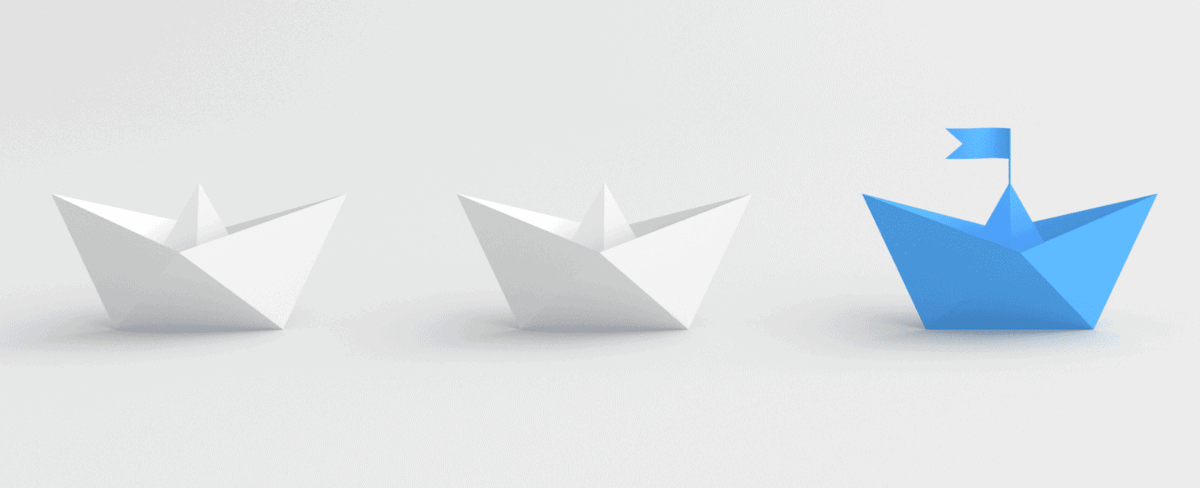

Develop Your Personal Leadership Journey and Become an Effective Leader

Written by The Blue Ocean Team
Adapted from Chan Kim and Renee Mauborgne’s Blue Ocean Leadership, Harvard Business Review (May, 2014)
Every day you are on your personal leadership journey. The decisions you make as a leader affect your team and your organization. How would you evaluate your leadership? Are you an effective leader that drives high performance and brings your people along? Or can your leadership profile be markedly improved?
What if, instead of altering who you are, you could undertake a different set of tasks and create a step-change in your leadership strength?
In this article, we’ll walk you through some of the steps you can take today to design your personal leadership journey. We will introduce you to specific tools that will help you visualize your leadership reality and ask questions to redesign your leadership profile.
At the end of the article, you will also find a presentation – an introductory guide, “ How to Become a Blue Ocean Leader “, containing tools and templates to help you take your leadership to the next level.
Your leadership journey reflection
Reflect for a moment on your personal leadership journey thus far. How effective is your leadership in your organization? Are your people engaged or disengaged? Is there a gulf between the potential and the realized talent and energy of your people at work? If so, how big do you imagine the gulf is – 10 percent, 20 percent, 40 percent of unrealized talent?
If your organization is like most, then chances are you have more disengaged employees than engaged ones.
How much better would your organization likely perform in terms of productivity, creativity, customer service, and employee happiness if you could close the gap?
Ask yourself, what is your role as a leader? If you believe your role is to drive high performance, then reflecting on your personal leadership journey and understanding how to turn this situation around is critical.
Starting with yourself is the first step to making a step change in leadership strength in your organization.
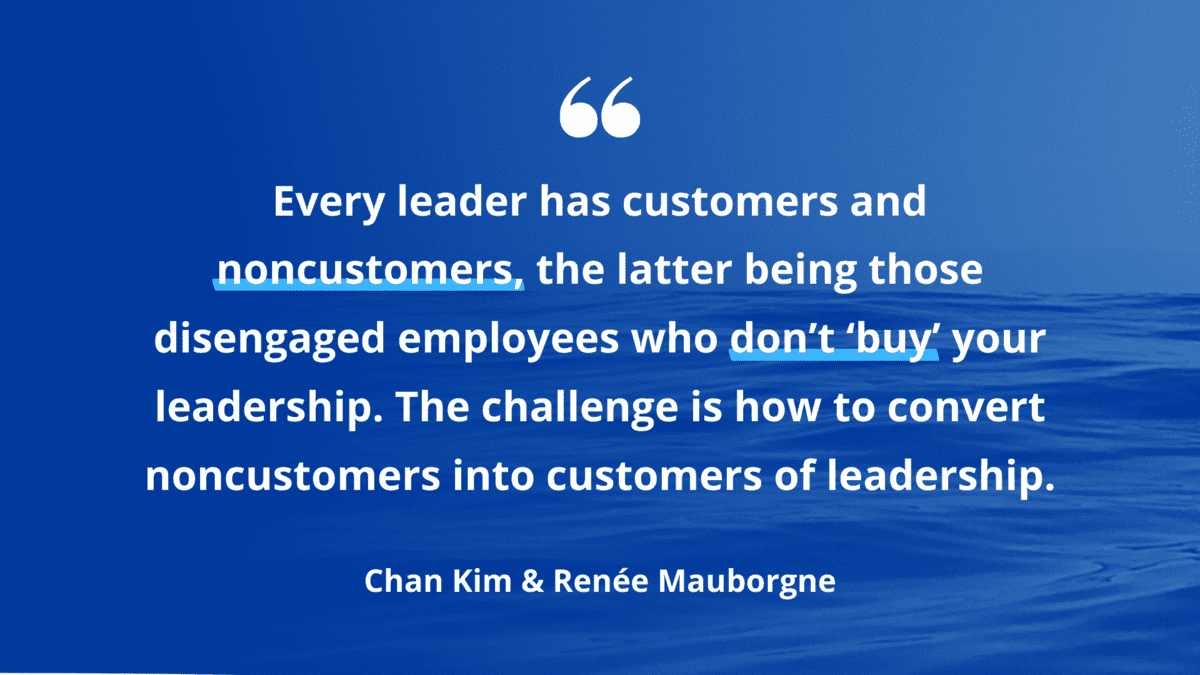
Your personal leadership journey starts today
How can you stand out as a leader? By turning disengaged employees into engaged ones through an approach to leadership that Chan Kim and Ren é e Mauborgne call ‘ blue ocean leadership ’ .
The insight for blue ocean leadership is that leadership, in essence, can be thought of as a service that people in an organization either ‘buy’ or ‘don’t buy’.
Once you start thinking about your personal leadership in this way, you can see how the concepts and frameworks developed to create new demand in the field of strategy, could be adapted to help you not only develop your personal development journey but at the same time convert your disengaged employees into engaged ones.
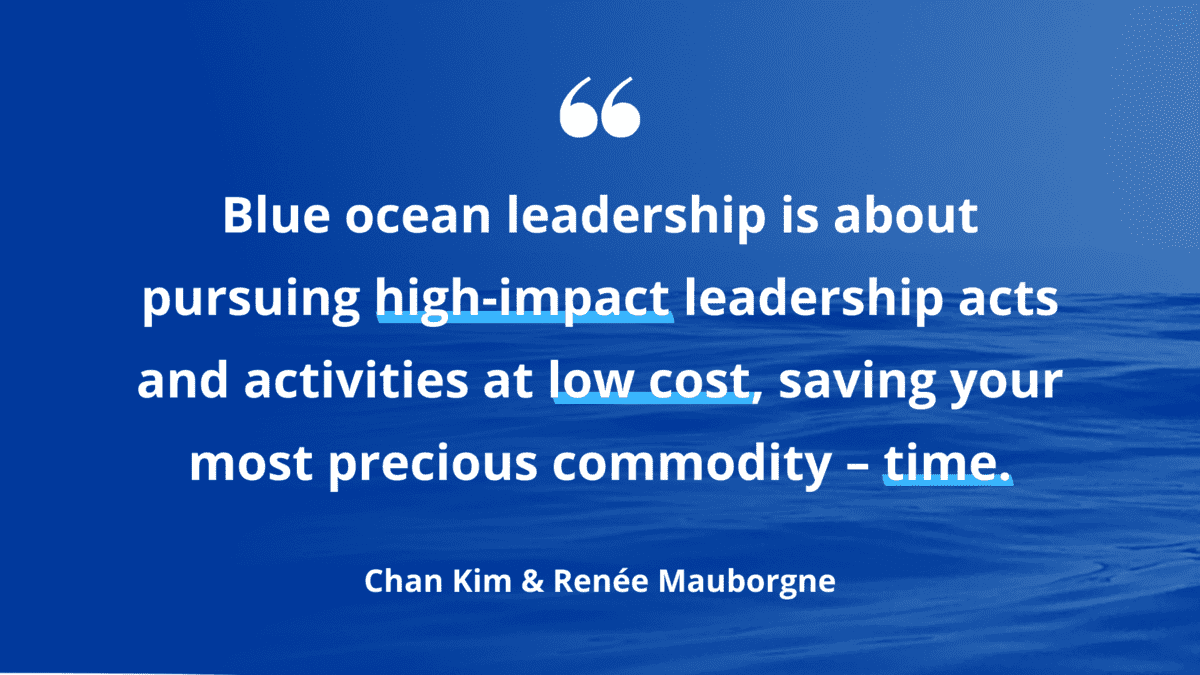
Focus on acts and activities
If you are ambitious to progress on your personal leadership journey, chances are you have been part of leadership development programs in the past.
Most leadership development programs and leadership strategies are designed to hone the cognitive and behavioral skills of leaders. The implicit assumption is that this will ultimately translate into high performance. Blue ocean leadership, in contrast, taps into the field of strategy by focusing on actions tied to market realities to rapidly bring about a step-change in leadership strength.
As part of leadership development programs, you have probably been called on to develop traits such as self-awareness, self-regulation, and empathy, all of which require deep self-reflection and introspection to assimilate into your character or behavior (or leadership style).
Of course, having the right values, qualities, and behavior traits matters and you should work on them. However, as part of a human being’s inborn nature, these factors are hard to change within a short time frame.
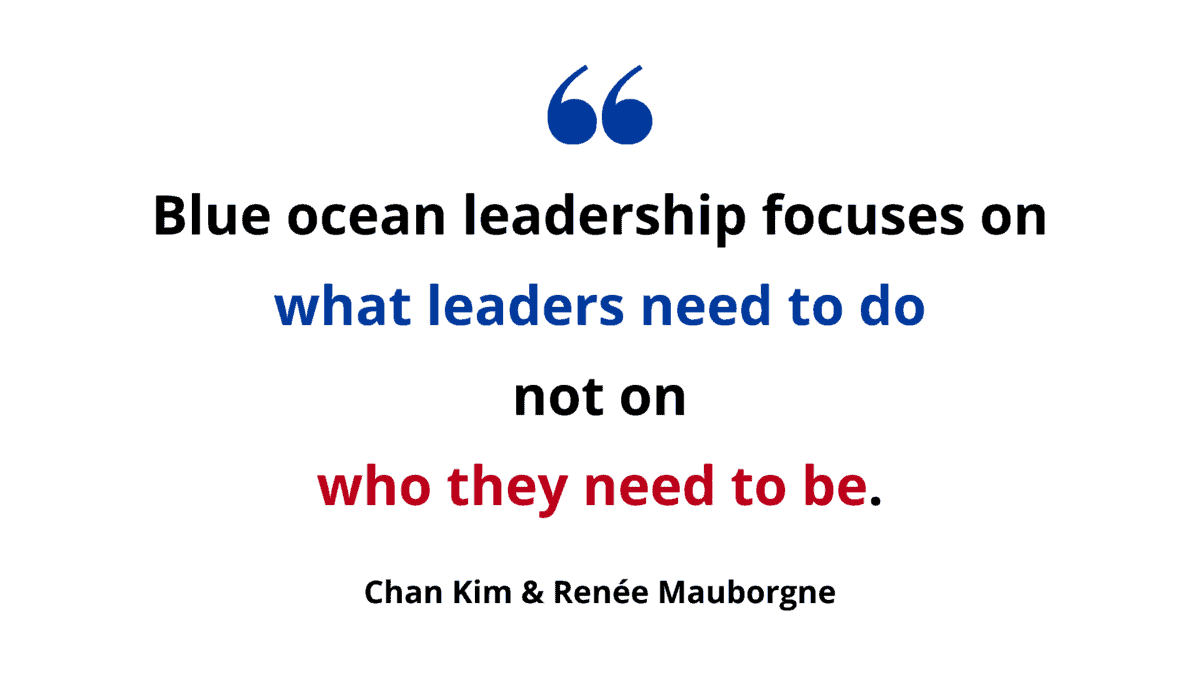
Blue ocean leadership, in contrast, is action-based, just as strategy is. It focuses on what acts and activities leaders need to do to provide a leap in motivation and business results driven by people, not on whom they need to be.
It’s the difference between being asked to be motivating versus being asked to provide those you lead with real-time feedback and best practice lessons that internally motivate and guide those you lead to up their game while feeling valued.
Imagine as a leader being asked to “be motivating”. Where do you begin? Now consider a different task: to provide those you lead with real-time feedback and best-practice lessons that motivate and guide people to perform more effectively while feeling valued.
It is markedly easier to change your acts and activities than your values, qualities, or behaviors.
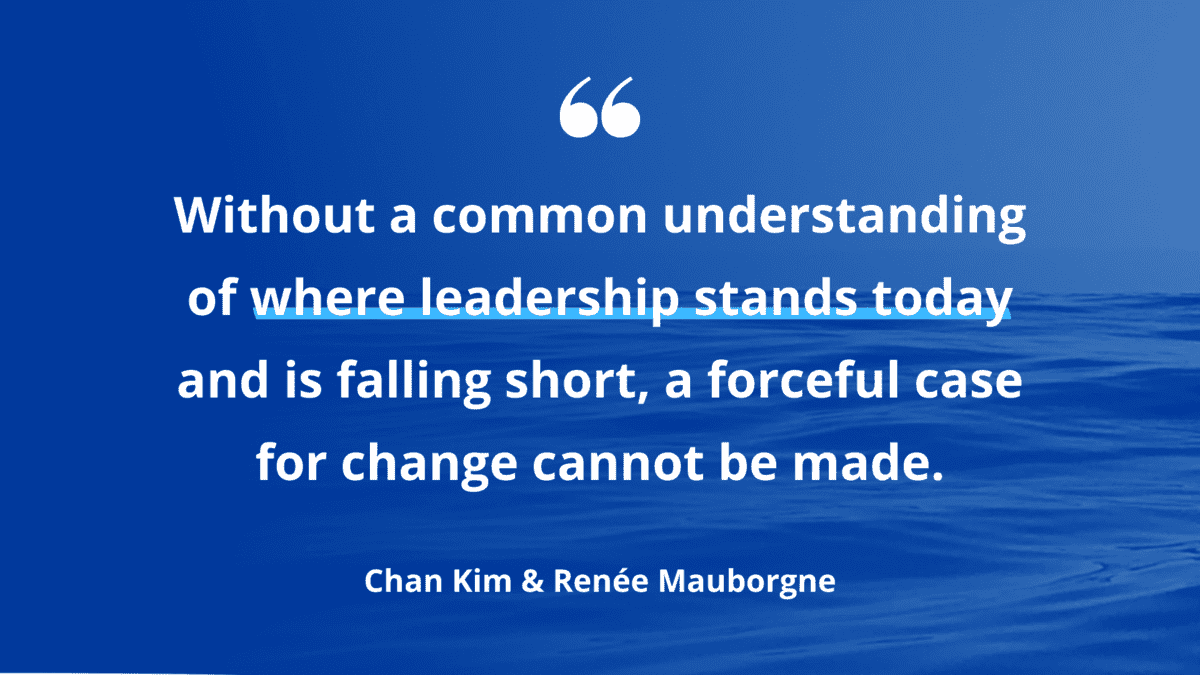
Tools to map out a powerful personal leadership journey
The as-is leadership canvas: how to see your current leadership reality.
Do you know how people in your organization currently experience your leadership? Are you engaging in acts and activities that hinder your team’s performance and motivation? Here is how to find out the reality of your personal leadership journey.
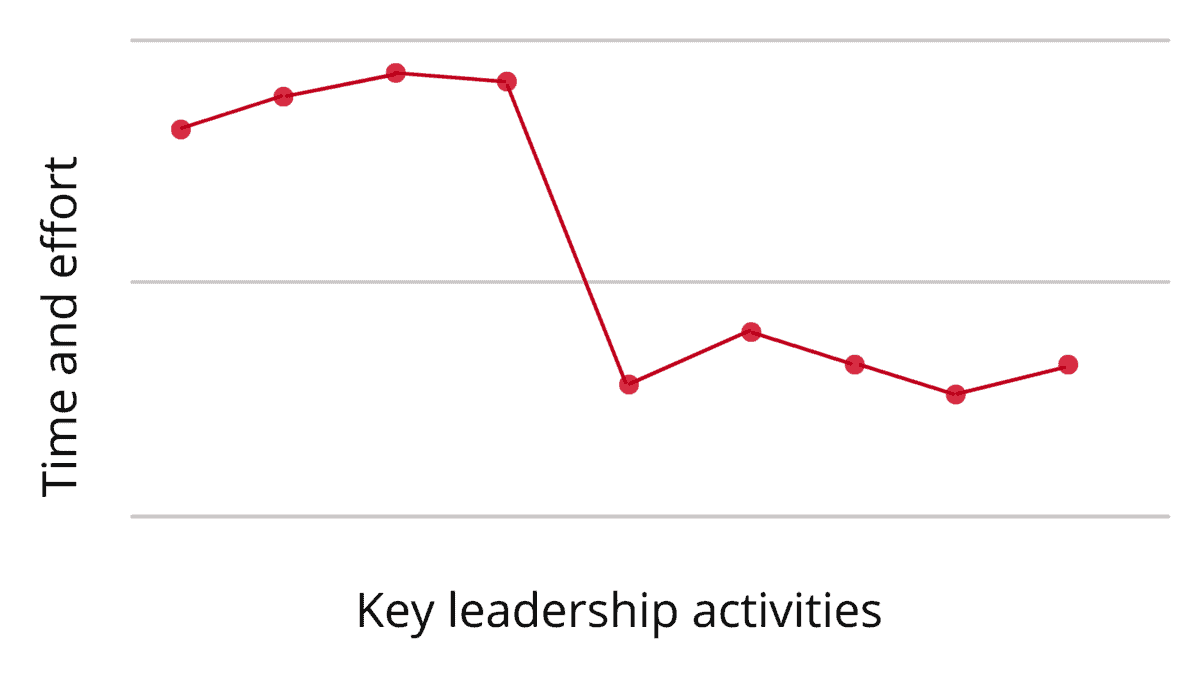
Blue Ocean Leadership Canvas. © Chan Kim & Renée Mauborgne. All rights reserved.
The Leadership Canvas is an analytic visual that shows the acts and activities leaders currently undertake and invest their time and intelligence in as perceived by each leadership level’s customers.
Ask yourself: what acts and activities are you spending most of your time on?
The objective here is to identify the key acts and activities – both good and bad – that actually absorb your time so the As-Is Leadership Canvas can be drawn.
Start by listing your key leadership acts and activities along the horizontal axis and plotting your investment of time and effort in each activity across the vertical axis. The big picture will give you keen insight into your current leadership reality and unlock your creativity to develop a new effective leadership profile for the future.
What did you find? Is your time mostly clogged with bureaucratic tasks and low-value acts and activities? Are you spending enough time on the acts and activities that actually add value to your organization?
Here is an example of an As-Is Leadership Canvas of one company’s senior management.

© Chan Kim & Renée Mauborgne. All rights reserved.
The Blue Ocean Leadership Grid: How to develop your new leadership profile
The Blue Ocean Leadership Grid is an analytic tool that complements the Leadership Canvas and helps you formulate your blue ocean leadership profile that can unlock the ocean of unrealized talent and energy in your organization.
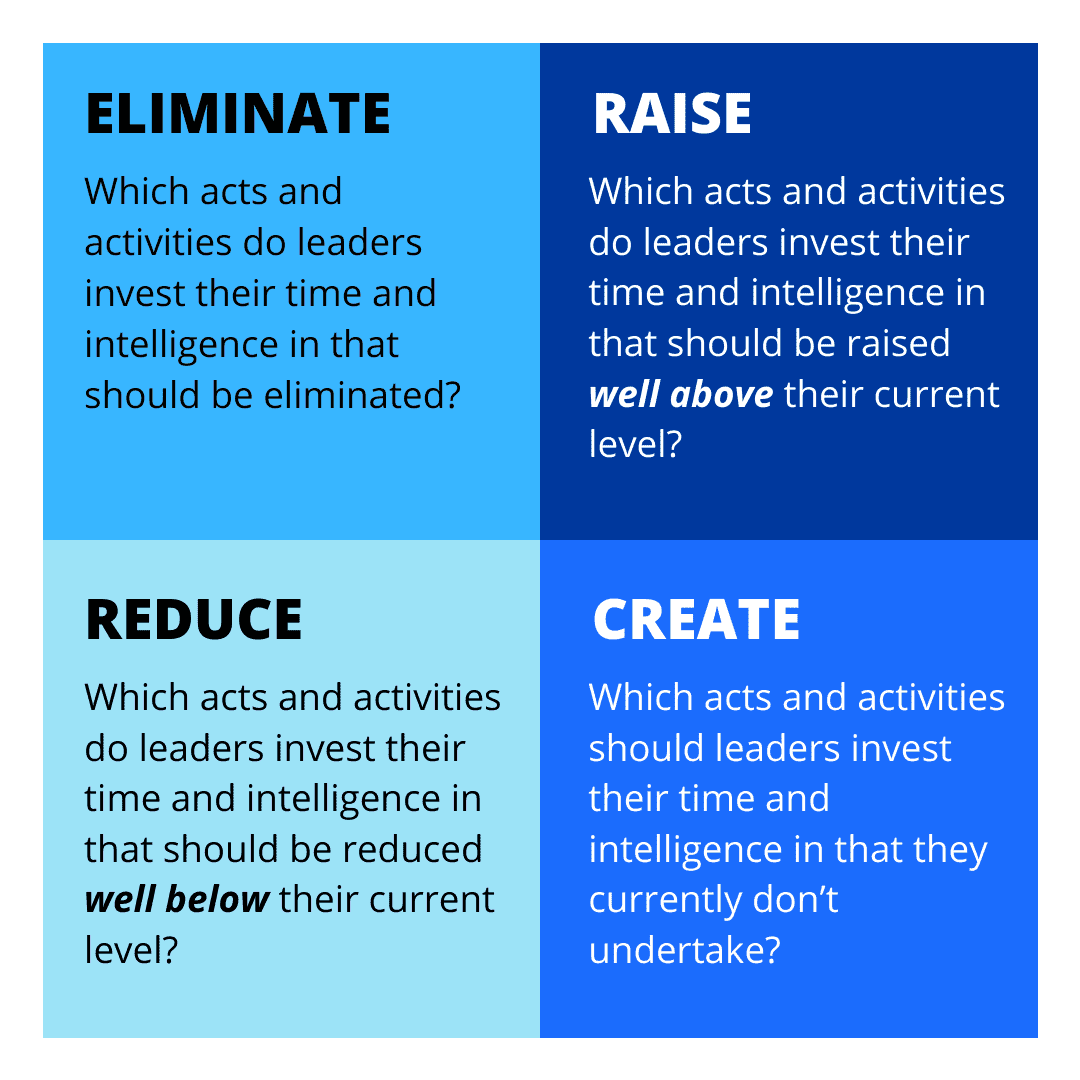
The Blue Ocean Leadership Grid © Chan Kim & Renée Mauborgne. All rights reserved.
The tool drives you to ask four questions that challenge your current leadership reality:
Eliminate : Which acts and activities you invest your time and intelligence in that should be eliminated?
Reduce : Which acts and activities you invest your time and intelligence in that should be reduced well below their current level?
Raise : Which acts and activities you invest your time and intelligence in that should be raised well above their current level?
Create : Which acts and activities should you invest your time and intelligence in that you currently don’t undertake?
The as-is leadership profiles help you wake up to reality and see the need for change.
The Blue Ocean Leadership Grid drives you to find out what leadership activities should be eliminated, reduced, raised, and created to create a step-change in your leadership strength and achieve high impact with a lower investment of time.
Based on the acts and activities from your completed Blue Ocean Leadership Grid, draw your To-Be Leadership Canvas.
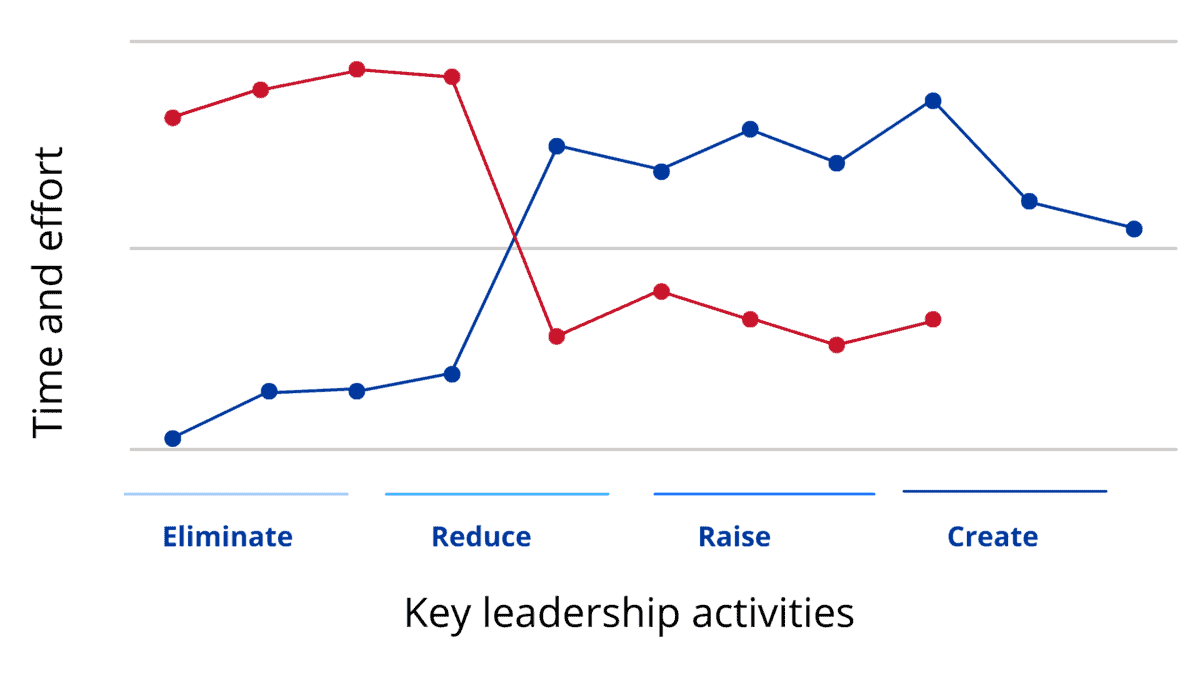
The To-Be Leadership Canvas zooms in on key acts and activities that you need to cut back on to free up time and space and those you should focus on to dramatically uplift your leadership performance. By focusing on acts and activities, the tasks for change are atomized.
Compared with traditional leadership programs that often focus on attitudes and behaviors that can take years of dedicated effort to cultivate, this approach offers you a relatively straightforward way to make high-impact changes happen fast and at low cost. As Chan Kim and Ren é e Mauborgne’s research has shown, it is easier to change what you do, than who you are.
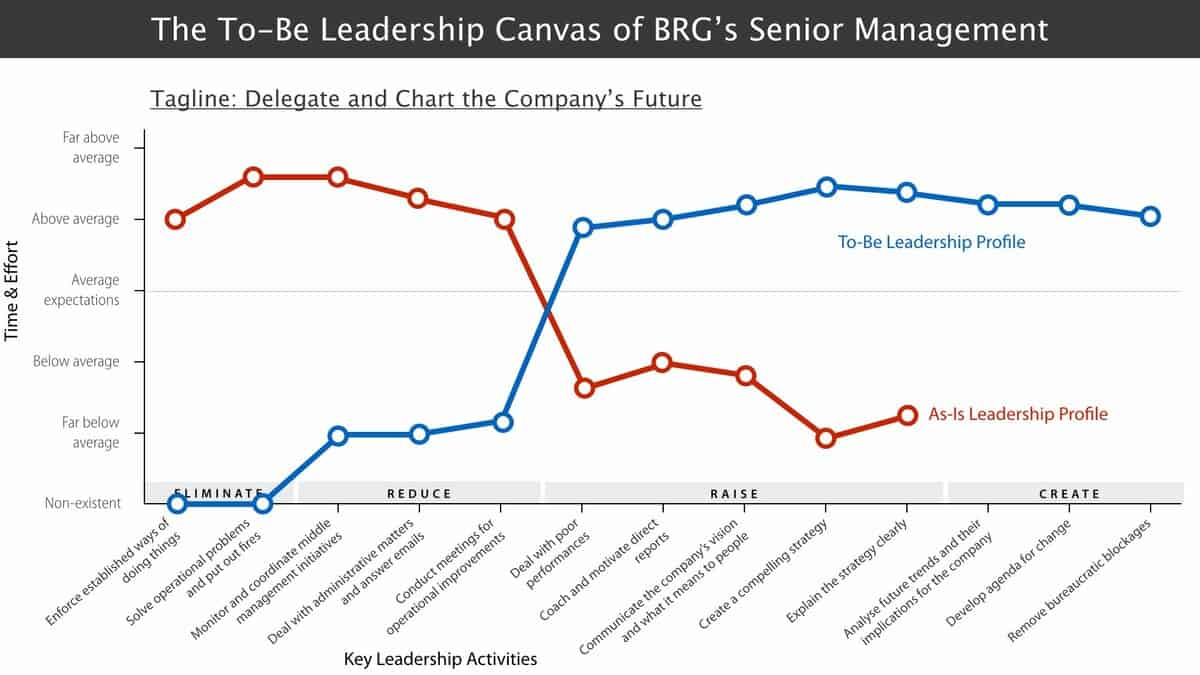
An example of a To-Be Leadership Canvas of one company’s senior management.
Your journey of leadership continues
Blue ocean leadership is about providing a structured process for you to discover for yourself how you need to change in action terms as a leader to create a win all around. The Leadership Canvas allows the standards for success to be measurable. It provides a simple one-page picture that you can quickly grasp, which shows your current or As-Is Leadership Profile and what acts and activities you need to eliminate, reduce, raise and create to deliver a leap in your leadership effectiveness for high performance.
While the practice of leadership will never be an exact science, the aim of blue ocean leadership is to help move it from soft amorphous values and traits to the acts and activities that managers can execute tomorrow and not work on for years before seeing results.
Just imagine how much higher performing your organization would be if you unlocked this blue ocean of new leadership space through action-based, market connected, distributed deep, blue ocean leadership?
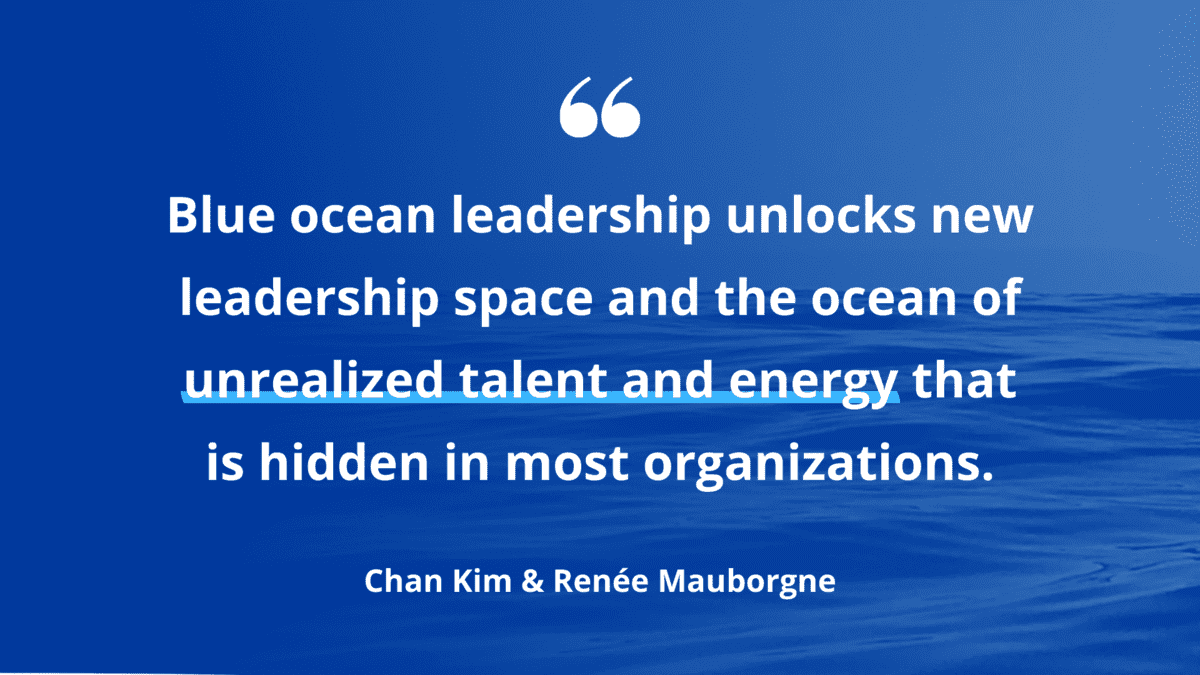
Personal leadership journey presentation
This introductory guide on How to Become a Blue Ocean Leader contains key points of blue ocean leadership along with the tools and templates to help you start on your journey to design your new leadership profile.
Download this presentation and work through the exercises to design your personal leadership journey using powerful tools of blue ocean leadership.
A must-have for managers and senior leaders! Download it below. The introductory guide comes with a 5-email mini series on blue ocean leadership where we discuss the concepts further.
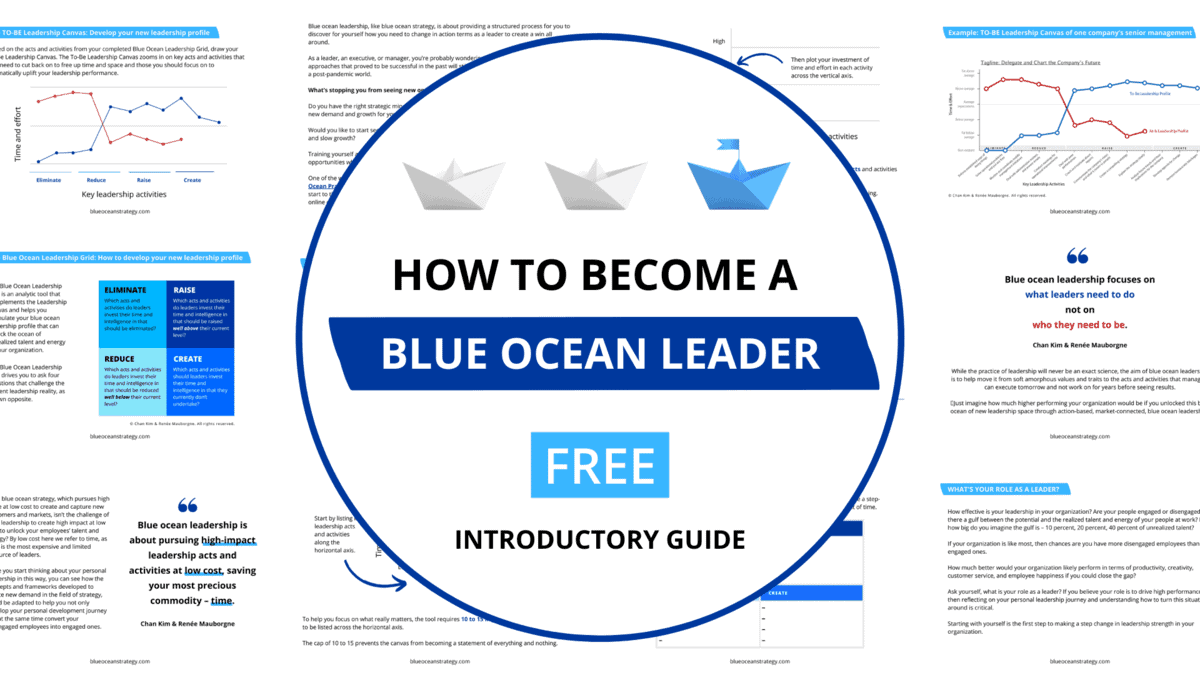
How to Become a Blue Ocean Leader
Get the FREE introductory guide
Focus on your actions instead of your traits and personality to create a step-change in your leadership strength

Recent posts

The Benefits of Innovation That Isn’t Disruptive
When it comes to innovation and growth, disruption is not the only path.

Artificial Intelligence on the Runway
How Technology is Transforming Fashion and Inspiring Blue Oceans

What Innovators Who Create New Markets Do Differently
How to excel at nondisruptive creation

A Nondisruptive Approach to the Environment
Companies can help the transition to a greener economy without sacrificing their financial interests.

Five Key Insights for Positive-Sum Innovation
With the right tools, businesses can innovate and achieve growth without negatively impacting society.

Nondisruptive Creation: An Alternative Path to Innovation and Growth?
How leaders can innovate and achieve growth without displacing industries, companies or jobs.
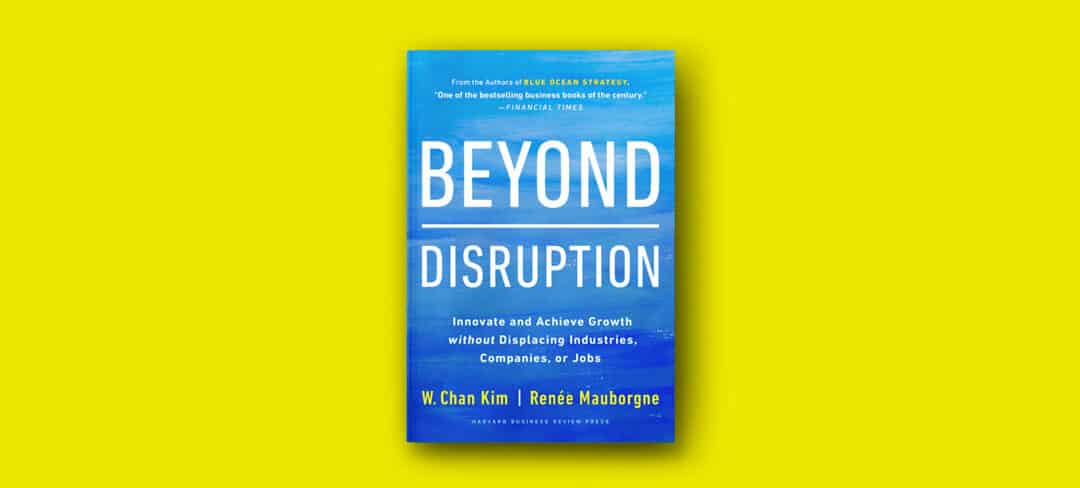
The Economic and Social Impact of Nondisruptive Creation
Where nondisruptive creation breaks from disruption

Kim and Mauborgne Honored as Two of the Four Leading Thinkers in Harvard Business Review’s 100-year Celebration
Recognized for their ground-breaking research journey, which seeks to understand how to go beyond zero-sum, win-lose paradigms to achieve positive-sum outcomes that create a larger economic pie for all.

Reimagining Veterinary Care: The Blue Ocean Strategy of PetWellClinic
How one vet used blue ocean strategy to turnaround his industry and life, creating a national chain of pet care clinics.
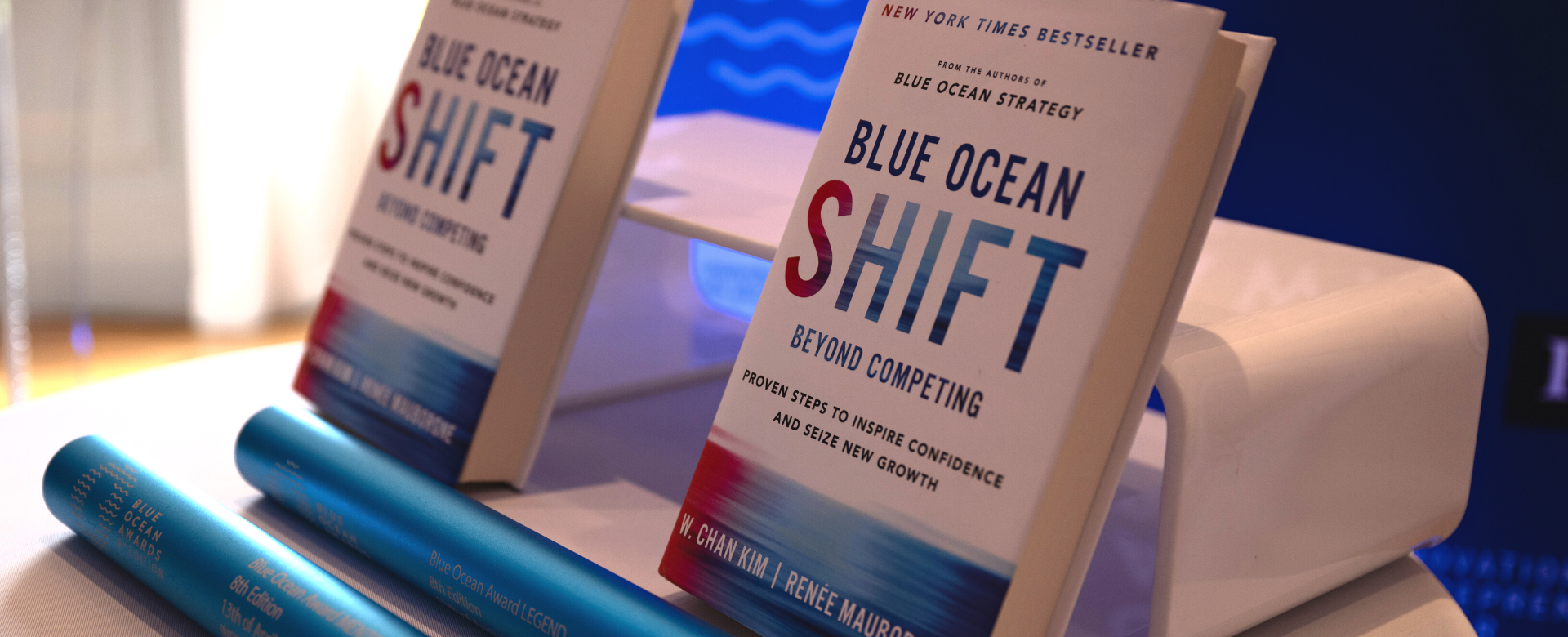
Announcing the International Blue Ocean Awards 2023
Celebrating Blue Ocean Strategy, Innovation & Entrepreneurship at the INSEAD Blue Ocean Strategy Institute

You May Also Like…
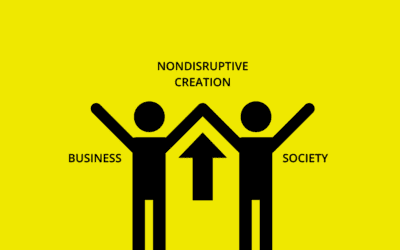
We’ve all heard the refrain: Disrupt this, disrupt that. Disrupt – or die. Unsurprisingly, many business leaders have...
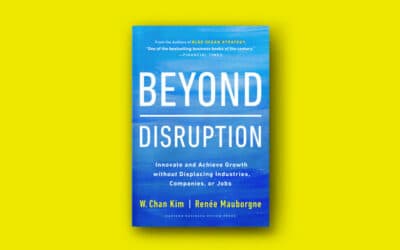
Excerpts from Chan Kim & Renée Mauborgne’s Beyond Disruption: Innovate and Achieve Growth without Displacing...

Harvard Business Review paid tribute to INSEAD’s Chan Kim and Renée Mauborgne, along with Harvard’s Michael Porter and...
Return to the Blog →
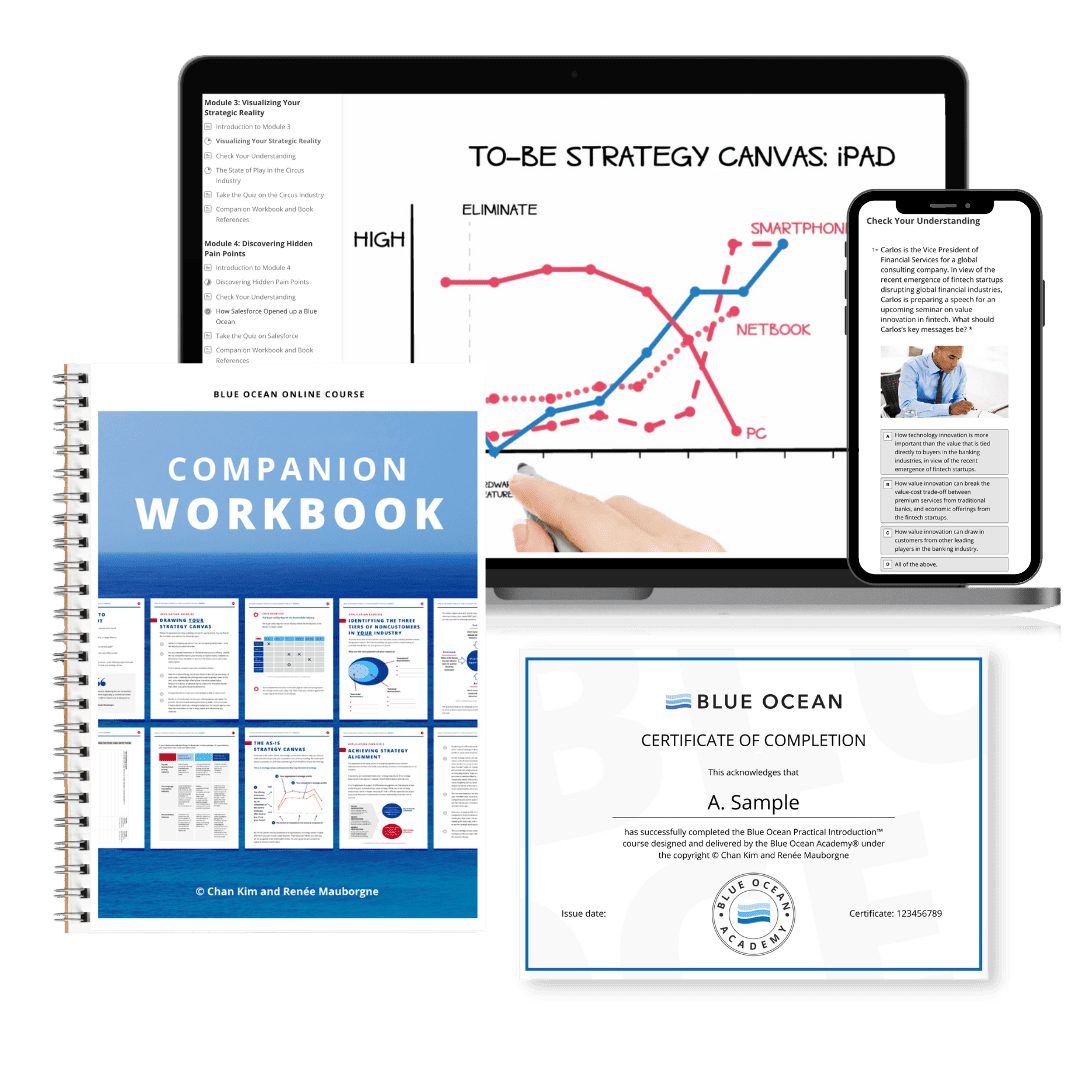
BLUE OCEAN SPRINT
Learn how to leave the competition behind. discover how to create a new market space while lowering your costs, fast..
“LOVED this course. No nonsense, 100% practical tools I can start implementing TODAY in my organisation!” Amalia C., Google
Join thousands of leaders like you who are creating innovative companies, products, and services that stand out from the crowd.
THE BLUE OCEAN STRATEGY PRACTITIONER PROGRAM

Transform your strategic perspective, master blue ocean tools and frameworks, & learn to unlock new growth opportunities
Get started with new market creation with our live, interactive, expert-led program.
ENROLL TODAY
Business Leadership Today
Navigating Your Leadership Journey: The 5 Crucial Steps in Leadership Development
Matt Tenney, Author of Inspire Greatness: How to Motivate Employees with a Simple, Repeatable, Scalable Process
The renowned tennis player Arthur Ashe once eloquently stated, “Success is a journey, not a destination. The doing is often more important than the outcome.” This profound insight resonates deeply within the sphere of leadership development, where the journey of growth and learning holds paramount importance.
Leadership is not just about being in charge. It’s about nurturing others, setting a vision, taking initiative, and creating something of lasting worth. It’s a journey, not a destination. And like any journey, it requires a roadmap.
But what does this roadmap look like? How do we navigate it? These are the questions that often arise when we embark on our leadership journey. Fortunately, we have a guide in the form of the five levels of leadership .
This model, which has been widely recognized and utilized in the field of leadership development, provides a clear path for aspiring leaders. It breaks down the complex process of leadership development into manageable steps, each requiring its own set of skills and abilities.
The five steps of leadership development, characterized by how a leader grows their influence, include establishing authority, building relationships, achieving results, fostering individual growth, and attaining respect that paves the way for a lasting leadership legacy.
Each step builds on the previous step and requires different skills and abilities to progress. Leaders continuously learn and grow to move from one level to the next.
By understanding these five levels of leadership and what is required for growth, leaders can better understand their own leadership style and identify areas for learning and development.
In this article, we will explore these five steps in detail, providing you with a guide to navigating your leadership journey. Whether you’re a seasoned leader or just starting out, understanding these steps can help you become a more effective and influential leader.
Why Leadership Is a Journey, Not a Destination
Leadership development is considered a journey because it’s a continuous process that involves growth, learning, and evolution over time. It’s not a static state or a fixed destination that one can reach and then stop.
Leadership is about responsibility, not power . Leaders are often responsible for setting a vision and taking the initiative to achieve that vision, with the goal of uniting team members with a shared sense of purpose that guides them toward the vision.
Here are a few reasons why leadership development is seen as a journey:
Continuous Learning
Leadership involves a wide range of skills and abilities, many of which are developed and refined over time. These can include communication skills, decision-making abilities, emotional intelligence, and many others. Leaders must continually learn and adapt to new challenges and situations.
Much of leadership development comes from hands-on experience. Leaders learn from their successes and failures, and each experience provides valuable lessons that help them grow and improve.
Personal Growth
Leadership development often involves personal growth. Leaders must understand themselves, their strengths and weaknesses, and how they impact others. This self-awareness and personal development is a lifelong journey.
Changing Roles
As leaders progress in their careers, their roles and responsibilities often change. They may need to develop new skills and adapt to new challenges. This ongoing adaptation is part of the leadership journey.
Mentorship and Succession
Part of a leader’s journey is developing future leaders. This involves mentoring others, sharing knowledge and experiences, and preparing for succession.
In the words of John C. Maxwell, “Leadership develops daily, not in a day.” This underscores the idea that leadership development is a journey that unfolds over time.
The Maxwell Model of Leadership Development
Maxwell, a renowned leadership expert and author, introduced his model of leadership development—the 5 levels of leadership—which provides a comprehensive framework for understanding and cultivating effective leadership.
This model, detailed in Maxwell’s seminal works Developing the Leader Within You and The 5 Levels of Leadership , offers a clear roadmap for leadership development.
Maxwell’s model delineates five distinct levels of leadership, each characterized by a unique focus and type of influence:
- Position (Rights): Leadership starts with a title or position that gives the leader authority.
- Permission (Relationships): Leaders earn trust and respect, leading to voluntary followership.
- Production (Results): Leaders gain recognition through tangible results, enhancing their credibility.
- People Development (Reproduction): Leaders focus on team development, enhancing performance, and cultivating future leaders.
- Pinnacle (Respect): Leaders create a legacy of leadership, extending their influence beyond their immediate sphere.
Maxwell’s model serves as a beacon for leaders at all stages of their leadership journey. By understanding and applying these levels, leaders can progressively enhance their influence, build stronger teams, and create a lasting legacy of leadership.
This model underscores the fact that leadership is not a destination but a continuous journey of learning, growth, and development.
Climbing Maxwell’s Leadership Ladder
Now, let’s dive deeper into each of these levels.
Position: Establishing Authority
The first level of leadership development is Position. At this level, individuals are given a title or position within an organization. This could be a team leader, manager, director, or any other leadership role.
The leader’s influence at this level is limited to the power of their position. People follow the leader because they have to, not necessarily because they want to. The leader’s success at this level is based on their ability to get the job done and meet the organization’s objectives.
Permission: Building Relationships
The second level of leadership is Permission. At this level, leaders develop relationships with their team members. They earn the trust and respect of their team by showing genuine interest in their team members and treating them with respect. People start following the leader because they want to, not because they have to.
When it comes to leadership development, relationships are everything . Building on this foundation, the leader’s influence grows as they earn the trust and respect of their team. The leader’s success at this level is based on their ability to build strong relationships with their team members
Production: Achieving Results
The third level of leadership is Production. Leaders at this level are effective at getting things done. They produce results and their teams are highly productive. This increases the leader’s credibility and influence within the organization.
As highlighted in an article from the MIT Sloan Management Review , leaders who emphasize organizational outcomes and achieve results not only enhance their credibility but also their influence within the organization, with these perceptions being formed through both direct and indirect observation of the leader’s performance.
The leader’s success at this level is based on their ability to achieve results and meet the organization’s goals.
People Development: Fostering the Growth of Individuals
The fourth level of leadership is People Development. At this level, leaders focus on developing their team members. They invest time and energy into mentoring and training their team.
This not only improves the team’s performance but also creates future leaders. The leader’s success at this level is based on their ability to develop their team members and create future leaders.
Pinnacle: Attaining Respect
The fifth and highest level of leadership is the Pinnacle. This level focuses on attaining respect and building a lasting leadership legacy.
Leaders at this level have developed leaders who are developing other leaders. Their influence extends beyond their own team and even their own organization. The leader’s success at this level is based on their ability to develop other leaders and create a legacy of leadership.
Leadership development is a journey that involves growing from one stage to the next. Each level of leadership requires different skills and abilities, and leaders must continuously learn and grow to move from one level to the next.
Navigating Your Leadership Journey
Leadership development is a journey that requires self-awareness, continuous learning, and growth. The five steps of leadership development provide a roadmap to guide you on this journey. Here’s how you can apply these steps to your own leadership development:
Step 1: Establishing Authority
The first step in your leadership journey is establishing authority. This is the stage where you recognize the power and responsibility that comes with your position. It’s important to understand that at this level, people might follow you because they have to, not because they want to.
At this level, your influence comes solely from your position or title. Therefore, it’s crucial to use your authority responsibly and strive to meet your organization’s objectives. This involves setting clear expectations, making decisions, and taking responsibility for the outcomes.
Understand the responsibilities that come with your position and use your authority wisely. Set clear expectations for your team and lead by example. Regularly communicate with your team to ensure everyone is aligned with the team’s objectives.
Step 2: Building Relationships
The second step involves building relationships with your team members. This is where your leadership style starts to take shape. You show genuine interest in your team members and treat them with respect.
By doing so, you earn their trust and respect. This leads to a shift in dynamics where people follow you because they want to, not because they have to. Building strong, authentic relationships is key to expanding your influence beyond your positional authority.
Invest time in getting to know your team members on a personal level. Show genuine interest in their well-being and career aspirations. Regularly provide positive feedback and recognition to build trust and respect.
Step 3: Achieving Results
The third step in your leadership journey is about achieving results. At this level, your focus should be on getting things done.
Your ability to produce results will increase your credibility and influence within the organization. Remember, leaders are often judged by their ability to achieve results. Therefore, developing a results-oriented mindset is crucial at this stage.
Strive to meet your goals and help your team meet theirs. Set clear, measurable goals for yourself and your team. Regularly track and review progress toward these goals. Celebrate achievements and learn from failures.
Step 4: Fostering the Growth of Individuals
The fourth step involves fostering the growth of individuals within your team. At this level, your focus shifts from achieving personal results to developing your team members.
Invest time and energy into mentoring and training your team members. By helping them grow, you’re not only improving your team’s performance but also preparing future leaders.
Identify the strengths and development areas of each team member. Provide opportunities for them to learn and grow. This could be through on-the-job training, mentoring, or external courses. Regularly check in on their progress and provide constructive feedback.
Step 5: Attaining Respect
The final step in your leadership journey is about attaining respect and leaving a lasting legacy. At this level, your influence extends beyond your team and your organization. You’ve developed leaders who are developing other leaders.
When you’ve reached the point where people follow you because of who you are and what you represent, you can shift your focus to leaving a legacy of leadership that will serve as a model for others.
Strive to create a positive and inclusive team culture where everyone feels valued and respected. Encourage team members to take on leadership roles and provide guidance as needed. Share your own experiences and lessons learned to inspire and motivate others.
Moving through these levels doesn’t happen overnight. It requires time, effort, and a commitment to continuous learning and growth.
Making the Most of the Journey
Leadership development is indeed a continuous journey, not a destination. It’s a path that requires self-awareness, continuous learning, and a steadfast commitment to personal and professional growth.
As you navigate through the five levels of leadership—from establishing your position to building relationships, from achieving results to developing people, and finally, attaining respect—remember to be patient with yourself.
Every great leader was once a beginner. Every seasoned executive was once a novice. It’s important to remember that progress, not perfection, is the goal. Each step you take on this journey, no matter how small, is a step toward becoming a better leader.
As John C. Maxwell once said, “The greatest day in your life and mine is when we take total responsibility for our attitudes. That’s the day we truly grow up.” This quote serves as a reminder that leadership development starts from within. It’s about taking responsibility for your actions, your decisions, and, most importantly, your attitude.
So, embrace the journey. Learn from your experiences. Grow with each challenge. And, most importantly, make the most of the journey. Because in the realm of leadership, the journey itself is the reward.
Whether you’re just starting out on your leadership journey or you’re a seasoned leader, the five steps of leadership development provide a roadmap to guide you. Use it to navigate your path, enhance your influence, build stronger teams, and create a lasting legacy of leadership.
After all, leadership is not just about reaching the pinnacle; it’s about the journey you take to get there.
Matt Tenney has been working to help organizations develop leaders who improve employee engagement and performance since 2012. He is the author of three leadership books, including the groundbreaking, highly acclaimed book Inspire Greatness: How to Motivate Employees with a Simple, Repeatable, Scalable Process.
Matt’s ideas have been featured in major media outlets and his clients include numerous national associations and Fortune 500 companies.
He is often invited to deliver keynote speeches at conferences and leadership meetings, and is known for delivering valuable, actionable insights in a way that is memorable and deeply inspiring.
Others Recent Articles and Podcast Episodes
Four ways emotional intelligence improves team culture, improving employee experience in the workplace, the impact of diversity and inclusion on organizational success and employee well-being.

Building the Pyramid
Read more about John Stein
- September 5, 2014
The six stages of the leadership journey
- By John Stein
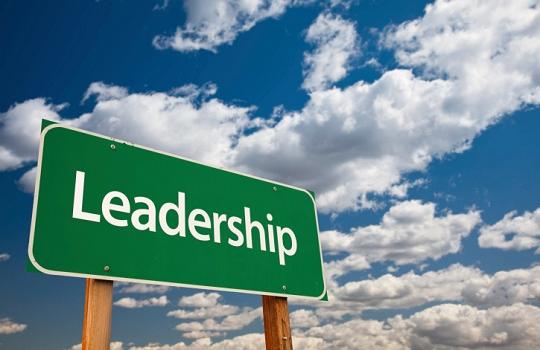
Steering an organisation on its unique journey towards its chosen destination is one of the biggest personal challenges facing all leaders. Why? Because internal and external issues will constantly change the landscape in which the organisation operates.
Navigating the landscape is widely recognised as the new core requirement of the 21st century leader . The benefits of applying navigational skills are immense, including the creation of a more agile, successful and sustainable organisation.
Understanding the six stages of the leadership journey is essential to getting to grips with the ‘navigational’ aspect to the leader’s role.
1. Research
The 'research' stage focuses on the size of the opportunity for everyone likely to be involved on the journey including suppliers, partners and other stakeholders. The role of the leader is to create a journey experience and an organisation that others wish to be part of.
Three important objectives should be achieved during this stage:
- Identify the reasons for embarking on the journey
- Establish the challenges and issues likely to be faced in the future
- Produce a vision statement highlighting the dreams and ambitions of the organisation.
The outcomes from each objective should be used to describe the landscape. The destination (the vision) will inspire individuals to sign up to the journey.
Remember, everyone wants to be part of something special. Purpose, belonging, challenge, adventure and opportunity should form part of the vision. If not, early momentum on the journey will be problematic. Attracting, recruiting and retaining talent will be impossible to achieve.
2. Strategy
The 'strategy' stage focuses on the production of the route map needed to carefully chart the right course on the journey. The role of the leader is to demonstrate how the vision will be realised by aligning the leaders’ overall plan to each role in the organisation.
- Identify the areas of operational focus critical to success on the journey
- Establish the behaviours and/or values important to the organisation
- Match the relevant areas of focus to each individual’s role.
The outcomes from each objective should be used to produce a simple route map (a blueprint for the journey). The effectiveness of the blueprint can be measured by answering four key questions: ‘Where are we going?’; ‘How will we get there?’; ‘What is my expected contribution?’ and ‘What’s in it for me?’
The production of the route map is the single most important piece of work carried out by leaders on the journey
3. Engagement
The 'engagement' stage focuses on obtaining the buy-in and commitment from others to the route map. The role of the leader is to not to generate more followers, but to create more leaders throughout the organisation.
- Identify cultural architects (leaders without authority)
- Carry out informal people surveys to gauge commitment levels
- Use the feedback to improve the overall workplace experience.
The outcomes from each objective should be used to improve communication, build trust, develop leadership capability and sustain performance momentum on the journey. Cultural architects are advocates of the vision, the route map and are proud to be associated with the organisation and the journey.
The greater number of cultural architects you have in the organisation, the higher your level of people engagement will be. Productivity and performance will improve.
4. Motivation
The 'motivation' stage focuses on the creation and reinforcement of the performance climate needed on the journey. Motivation describes ‘personal drive’ and is often misunderstood in the workplace. Leaders and managers will never be able to motivate their people. Individuals motivate themselves.
The role of the leader is to create a climate which will enable others to perform to their full potential.
- Define what is meant by high performance
- Identify what motivates and de-motivates individuals
- Remove any barriers to high performance that may exist.
The outcomes from each objective should be used to improve the people management skills of leaders and managers. Four key ‘climate’ principles should be built into their day to day interaction with colleagues – achievement, recognition, participation and growth.
Understanding motivation and the link with the climate is vital to sustaining momentum on the journey.
5. Development
The 'development' stage focuses on the need to protect the systems, processes and people important to creating a successful and sustainable organisation. The role of the leader is to improve operational efficiency on the journey by setting new and higher standards.
Performance complacency can easily creep in on any journey. The development stage is designed to stop this happening.
- Identify the barriers to operational efficiency
- Agree behavioural competencies for each job role
- Educate individuals in the principle of lifelong learning.
The outcomes from each objective should be used to inspire people in the organisation to innovate, change and actively seek new and smarter ways of working.
Understanding the unique contribution of others, unlocking the power of information and the creative use of experience and expertise is important to delivering success.
6. Ownership
The 'ownership' stage focuses on maximising the people potential in the organisation and is the culmination of the work carried out during the previous five stages. Ownership is often regarded as the ‘holy grail’ on the journey – the ultimate cultural prize where agility, pride, trust and collective focus is demonstrated.
The role of the leader is to build a confident, high-performing workforce resulting in the successful execution of the strategy.
- Explain the importance of ‘personal accountability’
- Ensure people understand their role and performance responsibility
- Use coaching and feedback to inspire others.
The outcomes from each objective should be used to create an environment where people are confident enough to take the appropriate action to perform at the highest level. The ability to handle last-minute problems, surprising challenges and unforeseen circumstances are measures of ownership effectiveness .
Arrival at the destination is achieved.
Best wishes on your journey, wherever it may take you.
- Tags: Leadership , Organisational design & development
One Response
A good construct.
I think that ownership and motivation do not necessarily have to follow a sequence. These both are required at all stages- at the beginning, in the middle and in the concluding stage. Without it, the leader will neither do the research, nor make strategy or engage with people to create the buy-in. The journey of change begins from "within"


Upcoming employment law changes: Your need-to-know guide

Tech culture: On-site gym or layoffs by email?

Self-management part two: Performance, learning and reward

The business of HR: Navigating the strategic landscape
Most read this week.
- Business , Perform
- 3rd June 2024
- Holly Navarro

- Culture , Lead
- 17th May 2024
Preventing the ‘next pandemic’ with mental health strategies
- Thom Dennis

- Culture , Default , Lead
- 7th May 2024
Why effective leadership starts with looking inwards
- Karen Liebenguth

- Lead , Strategy
- 30th April 2024
Becoming agile and responsive in the age of ‘permavucalution’
- Jackie Clifford
Matt Somers - Coaching Culture Series
How to build a coaching culture
The fundamentals to crafting a coaching culture
Part one: Coaching for success
Building a coaching culture
Part two: What’s the story?
Why stories are a powerful tool for creating a coaching culture
Part three: Coaching as a ritual
Why coaching needs to be embedded as a cultural ritual
- About HRZone
- Privacy policy
- Sub-Processors List

Get the latest from HRZone.
Subscribe to expert insights on how to create a better workplace for both your business and its people.
Company size 1-9 10-49 50 to 99 100 - 499 500 - 999 1,000 - 4,999 5,000 - 9,999 10,000 - 49,999 50,000 - 99,999 100,000 +
Role responsibility CIO CEO Chairman HR Director Head of HR HR Manager HR Officer/Assistant Manager But Not Dept Head Board Level Dir But Not HR HR Consultant Supplier to HR Training Dir/Head Training Manager Training Consultant Training Officer/Exec/Assistant Trainer/Coach/Mentor/Tutor Sales and Marketing/Bus Dev Academic/Lecturer Student
- Business Essentials
- Leadership & Management
- Credential of Leadership, Impact, and Management in Business (CLIMB)
- Entrepreneurship & Innovation
- Digital Transformation
- Finance & Accounting
- Business in Society
- For Organizations
- Support Portal
- Media Coverage
- Founding Donors
- Leadership Team

- Harvard Business School →
- HBS Online →
- Business Insights →
Business Insights
Harvard Business School Online's Business Insights Blog provides the career insights you need to achieve your goals and gain confidence in your business skills.
- Career Development
- Communication
- Decision-Making
- Earning Your MBA
- Negotiation
- News & Events
- Productivity
- Staff Spotlight
- Student Profiles
- Work-Life Balance
- AI Essentials for Business
- Alternative Investments
- Business Analytics
- Business Strategy
- Business and Climate Change
- Design Thinking and Innovation
- Digital Marketing Strategy
- Disruptive Strategy
- Economics for Managers
- Entrepreneurship Essentials
- Financial Accounting
- Global Business
- Launching Tech Ventures
- Leadership Principles
- Leadership, Ethics, and Corporate Accountability
- Leading Change and Organizational Renewal
- Leading with Finance
- Management Essentials
- Negotiation Mastery
- Organizational Leadership
- Power and Influence for Positive Impact
- Strategy Execution
- Sustainable Business Strategy
- Sustainable Investing
- Winning with Digital Platforms
5 Steps to Creating a Successful Leadership Development Plan

- 27 Nov 2019
Leadership development is a key initiative for many businesses. Organizations not only try to recruit candidates with leadership potential but cultivate their current employees’ leadership skills.
In a survey by global research and advisory firm Gartner , 60 percent of human resources executives said they’ll focus on cultivating leader and manager effectiveness for their company in 2023. In doing so, they intend to nurture the professional development of potential leaders by developing specific leadership qualities, such as authenticity, empathy, and adaptiveness—representing a new kind of “human” leadership.
Additionally, a report by the World Economic Forum projects leadership and social influence to be among the fastest-growing workplace skills through 2022, which ties into a burgeoning trend for all workers to become lifelong learners to address emerging skills gaps.
For motivated professionals who want to advance their careers and assume leadership positions, creating a leadership development plan is vital to staying ahead of the curve and rising to the demands of the job market. According to Harvard Business School Professor Ethan Bernstein, the path to effective leadership is more fluid now than in the past.
“Once upon a time, you would enter a leadership development program in a company that might put you on a 20-year track to becoming an executive,” Bernstein says. “Many of us can’t even fathom that today. But that should be freeing in that it gives us license to develop ourselves and create our own individualized leadership development plans.”
As you plot your career trajectory and consider how you can maximize your professional influence and impact, here are five steps to creating a successful leadership development plan.
How to Design Your Leadership Development Plan
1. assess where you are professionally.
Mapping your leadership development starts with understanding yourself and where you stand professionally. Taking stock of your strengths, weaknesses, and workplace tendencies can help identify areas for improvement and anticipate pitfalls that could arise on your journey to becoming a more capable leader.
“In the process of identifying how what you’ve done before may or may not make you successful going forward, you raise your awareness about how what you already know will contribute to, or undermine, your capacity to successfully lead others in the future,” Bernstein says.
Completing an assessment can be a valuable way to reflect on your motivational drivers and limitations and gain a more holistic view of your personal leadership style . Pairing self-reflection with a 360-degree assessment enables you to solicit feedback from colleagues and peers, which can provide greater insight into how others experience you. In turn, you can build and leverage a keener sense of emotional intelligence throughout your leadership development journey.
Related: 4 Tips for Developing Your Personal Leadership Style
2. Set an Attainable Goal
Goal setting is an essential component of any leadership development plan.
“Just like anything else: If you don’t know where you’re going, you’re probably not going to get there,” Bernstein says. “It sounds overly simplistic, but that summarizes why goals are important."
Bernstein teaches the PACE model, an acronym for:
- Pick a leadership goal
- Apprise others in your inner circle of the goal
- Collect specific ideas on how to improve
- Elicit feedback on how you’re doing

PACE is employed by learners to select leadership development goals and chart a course of action for achieving them. The first step in the process, Pick, is centered on identifying and prioritizing a goal you can strive toward to boost your professional effectiveness. When setting this goal, take an agile approach and consider both the short and long term.
“You can’t lose sight of where you’re trying to go over the span of a decade—or even a career—which is why making long-term goals is important,” Bernstein says. “But we can’t, as human beings, make progress if we make the milestones so grand and far away that they seem unachievable. A little bit of progress each day keeps the frustration at bay.”
As you define and establish your key goal, consider how you’ll measure progress along the way to ensure you stay on track.

3. Engage in Leadership Training
Leadership training can benefit you no matter your career stage. Beyond the opportunity to gain and practice the technical skills needed to empower employees and influence others , you’re exposed to faculty and peers you can lean on for support and learn and grow from. It can also equip you for future leadership roles.
According to Bernstein, honing your leadership abilities in a classroom setting is advantageous because it provides a low-risk environment for reevaluating and fine-tuning goals when you encounter setbacks.
“It’s helpful to have a group of people—we call it your ‘inner circle’—who’ve heard and embraced your leadership goals, and whose conversations helped inform how you would go about achieving them,” Bernstein says. “In moments of challenge and relapse, you can go back to them for encouragement and courage. You can revise your goals in a safe environment because you have a level of openness and vulnerability with those people built into the course.”
4. Interact with Your Network
A professional network is one of the most valuable resources in any leader’s arsenal, so make it a point to grow yours . Throughout your leadership development journey, connecting with like-minded peers can have a positive impact by providing opportunities to employ the knowledge you’ve gained and receive feedback on your progress.
These kinds of interactions are core tenets of the online course Leadership Principles , in which learners practice delivering feedback through video exercises that allow them to evaluate their effectiveness in various business scenarios.
“Ensure your leadership development includes some interaction with other learners and also with the people who are benefitting and suffering from your current capabilities as a leader,” Bernstein says. “We try to teach people to be good protégés, as well as good leaders. It’s an ongoing process. That interaction is important in making things that seem very theoretical ultimately become very practical.”
5. Hone Your Soft Skills
Effective leadership requires a unique blend of characteristics and skills .
“There are skills you need as a leader that you don’t necessarily develop in any other context, at least in a focused way,” Bernstein says. “These include communication; career planning; knowing how to create and evaluate authentic change in a person, including yourself; and negotiating career transitions. These are things you typically won’t do many times in your career, but they will be very important to continuing your leadership trajectory.”
As you chart your leadership development plan, consider how you can bolster essential soft skills like actively listening , practicing empathy , and creating value in a negotiation to ensure you’re prepared to tackle any organizational challenges that come your way.

Developing Your Leadership Skills
Striving to become a strong, capable leader is a commitment you can make at any stage of your career —although doing so sooner means you can reap the benefits longer. By assessing where you are professionally and thinking deeply about where you want to go, you can design a leadership development plan that enables you to channel your passions and build the skills needed to be more impactful in your role.
Do you want to enhance your leadership skills? Download our free leadership e-book and explore our online course Leadership Principles to discover how you can become a more effective leader and unleash the potential in yourself and others.
This post was updated on December 21, 2022. It was originally published on November 27, 2019.

About the Author
- SUGGESTED TOPICS
- The Magazine
- Newsletters
- Managing Yourself
- Managing Teams
- Work-life Balance
- The Big Idea
- Data & Visuals
- Reading Lists
- Case Selections
- HBR Learning
- Topic Feeds
- Account Settings
- Email Preferences
The Leadership Journey
- Leonard D. Schaeffer
Executives’ jobs can shift dramatically depending on the challenges they face. Here’s one CEO’s account of how he progressed through three very different styles of management.
Monday, February 10, 1986 was my first day as chief executive of Blue Cross of California. At a welcoming reception, the company presented me with a sculpture, nearly five feet tall, of a cross carved from blue ice and artistically decorated with succulent pink prawns. The thing was exquisitely beautiful—and the most apt emblem for wasteful spending I’d ever seen. When I asked where it came from, I was introduced to the company’s pastry chef. My first official act was to fire him. After all, Blue Cross of California was at that time the worst-performing of the 77 Blue Cross plans across the country, with annual operating losses of $ 165 million. With the organization teetering on the edge of insolvency, ice sculpting hardly seemed like a core function.
- LS Leonard D. Schaeffer is the chairman and CEO of WellPoint Health Networks in Thousand Oaks, California, one of the nation’s largest publicly traded health care companies.
Partner Center
- Michigan Ross: Sanger Leadership Center
- Mission, Vision, and Values
- Diversity, Equity and Inclusion
- Leadership Roadmap
- Crisis Challenge
- Leadership Dialogues
- Leading Inclusive Teams
- Ross Leaders Academy
- Collaboration Lab
- Graduate Electives
- Undergraduate Electives
- Michigan Ross Leader Endorsement
- News & Blog
- Michigan Model of Leadership
- Sanger Leadership Journey
- Leader Behavior Encyclopedia
- Corporate & Alumni Partners
- Sanger Advisory Board
Announcing our 5-step roadmap for developing yourself as a leader: The Sanger Leadership Journey
by Sanger Team | Aug 17, 2020 | Self-Leadership , Sanger News
Just like reading or math, leadership is a skill that anyone can learn. And it’s a valuable skill—leadership is key to achieving any goal you want to accomplish, be it personal, organizational, or societal. Whether you want to live a more purposeful life, lead a Fortune 500 corporation, or launch a civic movement, the more you polish your leadership skills, the more likely you are to achieve your goals.
That’s why we’ve designed the Sanger Leadership Journey , a step-by-step guide that will help you intentionally improve leadership behaviors every day. To enhance your leadership skills, you need to embark on an intentional leadership journey, where practicing evidence-based skills becomes part of your daily life. We believe that each social interaction you have—be it a dinner with friends, a project team meeting at work, a volunteering event, or a class lecture—offers you the chance to experiment with new leadership behaviors and expand your leadership skills.
Journey Website
Journey Workbook
The Leadership Journey consists of five steps:
- Identify Your Point of Origin
- Chart Your Course
- Get Going with Leadership Behavior Experiments
- Reflect and Update Goals
- Become a Guide for Others
Getting Started
You can visit the Journey website to understand the steps and download a fillable workbook. Additionally, the content will be specifically woven into all Sanger programs this year. Our MBA LDRx students will become especially familiar with the Journey as they will offer a tailored set of leader experiments for members to run, as well as an inclusive peer-coaching community where members can reflect with their small teams on the progress of their experiments and leadership development.
In addition to learning about and starting your own Journey workbook, you can:
- Follow Sanger on social media for weekly leadership behavior experiment tips based on research and data
- Sign up for a Sanger action-based learning experience, such as Leadership Crisis Challenge or Story Lab , where you can put the leadership skills you build to work
- Join one of our year-long learning communities, such as LDRx , for the opportunity to collaborate and reflect with other students on the Journey
Benefits of the Sanger Journey
- t can help connect the different strands of your life into a more intentional journey that will allow you to experience greater meaning as well as greater personal transformation. Many students struggle to integrate different experiences at school, such as clubs, classes, and internships, as well as to see how these experiences can be connected to inform one’s daily personal leadership development work. By viewing these different opportunities through the lens of a clear and intentional leadership journey, you can find ways to connect all of these experiences in ways that will transform you as a leader and expand your leadership skill set.
- The Journey can increase the likelihood of you reaching your professional and personal goals . Taking any form of action in the world requires leadership skills, and putting yourself on the path to intentionally develop these skills on a daily basis will help you better achieve what you want to do in the world.
- Your Journey will help you build stronger connections with others . As experimenting with and talking about leadership behaviors becomes part of your daily life, it will increase your comfort with developing broader and deeper connections with those around you.
A Few Examples
The Journey has already been put into action by our alumni and staff. Here are a few examples:

Step 1 – Point of Origin: I came to Ross from a career at a large conglomerate, with roles in Finance, Risk Management, and Sales – that’s my point of origin, and I know my destination – I want to lead a Fortune 500 company and serve my community through public service. The values that connect my point of origin and my future destination are servant leadership, collaboration, and compassion.
Step 2 – Chart Your Course: To lead a Fortune 500 company, I will serve diverse stakeholders. I learned at Sanger that inclusion is a key skill for leading diverse groups, and that helped me identify a few specific data-driven inclusive behaviors that I wanted to experiment with.
Step 3 – Get Going: I hypothesized that asking more questions in meetings would lead to more inclusive and productive team outcomes. I chose a weekly team meeting to run this experiment, and I asked a close friend on my leadership team to hold me accountable.
Step 4 – Reflect & Update Goals: After the meeting, I talked with my friend and refined my strategy. At the next meeting, I incorporated more non-verbals and reassessed the impact. I felt I was able to become increasingly more inclusive the more I practiced.
Step 5 – Become a Guide for Others: By using this framework, I have become much more comfortable guiding myself on my own personal leadership journey, and I have taken a really active role in collaborating with the other managers on my team regarding their leadership development.

Step 1 – Point of Origin: For the first time in my career, I was responsible for leading a project team for a highly complex learning program. With a background in higher education, the values that connected my point of origin and my destination included collaboration and making an impact.
Step 2: – Chart Your Course: I learned that to effectively lead a newly-formed team, I needed to establish a strong foundation of trust and safety.
Step 3 – Get Going: One hypothesis I identified was that exhibiting vulnerability improves team psychological safety and effectiveness. To test this, I expressed vulnerability in weekly team meetings and 1:1s.
Step 4 – Reflect & Update Goals: I informed a colleague who could keep me accountable and provide feedback. At one point, she suggested that meeting in a more informal setting would make it easier for team members to be vulnerable. I refined my strategy and started finding more casual meeting spots to practice vulnerability with the team.
Step 5 – Become a Guide for Others: The learning program was successful, and I have become a more confident leader because of my experience. I now look for ways to help others, such as my colleagues at Sanger, to embrace vulnerability in the teams they lead too.
We’re excited to support our students and community on their Journeys this year. We’ll be posting more examples, tips, ideas for behavioral experiments, and personal journey stories throughout the year. Have a story and want to be featured? Reach us at [email protected] .
- English | en
- Spanish | ES
- French | FR
- German | DE
- Portuguese | PT
- Chinese | ZH
- Japanese | JA
Strategy Activation: Planning a leadership development journey
Meaningful change in leaders happens over years, not a weekend. HR teams need to build a multi-stage itinerary.

Senior Client Partner
Effective leaders are the “difference that makes a difference” for organizations. The quality of leadership is one of the most important predictors of an organization’s future success (Peterson, Walumbwa, Byron and Myrowitz 2009).
Becoming an effective leader, however, requires tremendous effort and time (Ericsson, Krampe, and Clemens 1993), perhaps stretching over the course of an entire career. Proven leadership talent is often scarce and additionally, leaders are facing more complex challenges earlier in their careers (Bersin 2012). Because of these issues, it is in every organization’s best interest to develop leaders at all levels.
Most agree that leadership development should be aligned with business strategy and that it should ensure a robust pipeline of ready leaders. The importance of this alignment and readiness is highlighted by the ongoing quest for effective methodologies. We have found that viewing leadership development as a journey— one that integrates opportunities to gain insight, experiences, visibility and tackle challenges—creates paths that connect individual growth to organizational needs.
The role of human resource development.
Leadership development practitioners must find ways to balance an individual leader’s desire for growth and engagement with the organization’s need to drive business strategy and results. The most mature leadership development functions build capacity at the individual and organizational level by doing four things:
- Improve skills and competence. Korn Ferry recognizes four leadership skill categories: thought, self, people, and results. Thought leadership is about anticipating and solving problems. People leadership skills are those needed to develop other employees. Self leadership skills revolve around selfmanagement. Results leadership skills are focused on the abilities of planning and execution.
- Foster individual engagement. Whether individuals are in a managerial role now or not, they choose to lead—or not. The choice to lead comes from a deep sense of connection to the people and to the organization. Leaders are made when they understand their own unique values and purposes. With coaching and support, individuals can decide how leadership can allow them to act on their values.
- Create a path for succession. Leadership development must provide opportunities for leaders to stretch and grow into bigger jobs, and prevent the talent bottleneck for business growth. Development programs ensure there are enough leaders ready to step up and take on a broader range of responsibilities when needed.
- Support networking and organizational engagement. Leadership development can be used to create strong and lasting social bonds around a shared vision and purpose. This can help leaders talk about strategy and develop leadership qualities in others.
In order to serve all four of these aims through leadership development, programs must be integrated development journeys. These journeys go beyond training. Development and training have linked but different aims. Training has been likened to “filling up a glass;” in that it serves to add to a person’s knowledge base and information reserve. Development, on the other hand, not only fills up the glass but makes the glass larger and increases its capacity.
The goal of strategic leadership development is to help individuals, groups and organizations improve their ability to work together productively (Day and Harrison 2011). Often this requires challenging methods of the past. Rabinowitz, et al. (2013) asks us to “picture a yearlong developmental journey, done in a cohort, where participants grapple with real business issues and learn about leadership as they address relevant and high-value problems in the context of their own organization.” Creating these learning journeys requires a new approach to the design process, which uses the current context of the organization as a starting point.
Designing effective leadership journeys.
Leadership development should activate its organization’s strategy. In fact, the fundamental question of strategic leadership development is this: in what areas does an organization need talent that is better or more plentiful than its competitors? (Boudreau et al. 2002.)
For an example of strategy activation, take a recent case set in a health care delivery organization. The organization partnered with Korn Ferry to develop its leaders at a time of tremendous change. Recent mergers, massive growth in demand, and a new CEO with a new vision highlighted a real need for leadership within the organization.
Together, we followed the Strategic Leadership Journey Design Process to create an integrated development strategy.
- Recognize shift. In this step, the fundamental changes in the strategic roadmap were identified as “shifts” and these shifts highlighted the need for change. The shifts for the health care system were significant and pointed out challenging leadership gaps. Leaders of the future would need to be able to look beyond traditional settings for health care delivery and proactively partner with the communities they served. Administrative and clinical leaders would need to partner ever more closely to deliver on the organization’s mission.
- Clarify demand. Once the shift and nature of change was identified, the next step was to clearly define the new competencies demanded of leaders. In this analysis the talent gaps became apparent. There was a need for more strategic agility, cultural competence, communication, innovation, teamwork and systems thinking.
- Establish the core. For all that would change, it was important to identify that which would stay the same, including core leadership characteristics such as vitality, authenticity, learning agility, and self-awareness. In the case of this health care organization, the core characteristics also included ethics and cultural competence.
- Insight: How do people gain an awareness of what is missing or needs improvement? Insights are typically gained through feedback and assessment (often in the form of 360° feedback).
- Motivation: Why should people be motivated to invest the time and effort it takes to develop as leaders? Executives set the stage for success through role modeling. They also provide resources, act as coaches and support improvement.
- Skills: How will people absorb new skills? Based on Korn Ferry’s research, the most valuable development experiences (in decreasing order) are: rotational or stretch assignments, action learning, mentoring, relationships, 360° assessments, exposure to more senior leaders and formal classroom training.
- Real-world practice: How will people practice? Job experience and on-the-job challenges play a key role in developing leadership capabilities. Lessons learned early in one’s career have tremendous impact (McCall, Lombard, and Morrison 1988).
- Accountability: How will people be encouraged to internalize what they’ve learned and improve performance? They must receive feedback. They also need to be held accountable for how they apply what they’ve learned.
- Build program. With the learning journey architecture in hand, the next step was to create or select the development experiences most aligned with the leader and the leader’s context. In this case, participants at all levels were “players/coaches,” responsible for both patient and organizational outcomes. This meant that time for out of role development was short and had to be reserved for the highest impact experiences. As a result, virtual learning and action-learning projects, as well as workplace-based and just-in-time learning were combined with site visits and in-person, traditional, instructor-led development. All elements were tied together by the core leadership principles and aimed at critical competencies and experiences.
- Implement development. To launch the experience, insight was gathered with assessments, feedback and coaching. The support of senior leaders instilled motivation in participants. New skills, introduced in development workshops and synchronous web meetings, and real-world practice were acquired through learning assignments. Accountability was built through peer feedback and manager involvement.
- Post-session evaluations to gauge participant response and suggestions.
- Reviews of development planning (participants document their action plans).
- Conducting a formal 360° post-program Time2Change® survey.
- Comparing engagement surveys.
- Measuring actual retention rates for pivotal positions.
- Performance ratings of managers by employees.
The program management team reviewed evaluation data quarterly. This made it possible to see further opportunities for program alignment to the business strategy and needs of leaders.
This paper proposes a framework for the design of strategic leadership development journeys. We invite our fellow leadership development practitioners to evaluate their performance against it. Are you fostering leader growth at the individual and organizational levels? Who are your visible role models at the senior level? Are your learning strategies aligned with your business strategies? Do your learning strategies take advantage of the “tincture of time,” or are they transactional events?
Leadership is a valuable asset that every organization needs. However, it is a borrowed asset that the organization cannot own. It must be continuously acquired, developed, nurtured, engaged, and rewarded. The benefit of approaching leadership development as an ongoing journey is the progressive arrival of mature, committed leaders who are prepared to activate the business strategy.
Download the PDF

Insights to your inbox
Stay on top of the latest leadership news with This Week in Leadership—delivered weekly and straight into your inbox.
Recent Articles

This Week in Leadership (May 27 - June 2)
How #boredatwork is the latest leadership headache. Plus, how savvy managers can use good news to inspire their employees.
How #boredatwork has become the latest leadership headache. Plus, the latest research on the impact of working from home.

Briefings Podcast #25: Workday Redefined
Workers are now logging off an hour earlier than they did in 2021. Experts weigh in on how leaders might address this watershed moment.

5 Ways to Stay Energized at Work During the Summer
The warmer months mean vacations and other distractions, but they also offer a few ways to get ahead professionally.

College Sports: So Much Disruption, So Few Answers
The NCAA’s historic new deal allows schools to directly pay student-athletes. But what comes next in recruiting, funding, and other key areas is yet to be determined.
- Capabilities
- Business Transformation
- Organization Strategy
- Total Rewards
- Assessment & Succession
- Talent Acquisition
- Leadership & Professional Development
- Intelligence Cloud
- Consumer Markets
- Financial Services
- Healthcare & Life Sciences
- Specialties
- Board & CEO Services
- Corporate Affairs
- Cybersecurity
- FInancial Services
- Human Resources
- Information Technology
- Risk Management
- Supply Chain
- Sustainability
- Korn Ferry Architect
- Korn Ferry Assess
- Korn Ferry Listen
- Korn Ferry Pay
- Korn Ferry Sell
- Jobs with our clients
- Advance your career
- Join Korn Ferry
- Find a consultant
- Find an office
- Business impact
- Investor relations
- Press releases
© Korn Ferry. All rights reserved.
Terms of Use
Cookie Settings
Do Not Sell My Info
Skip navigation

World Leaders in Research-Based User Experience
How to run a journey-mapping workshop: a step-by-step case study.

July 5, 2020 2020-07-05
- Email article
- Share on LinkedIn
- Share on Twitter
When journey maps are used in the right way — as a means to address a specific, known business goal — the benefits are vast. Our earlier research on practitioners’ journey-mapping activities identified several advantages, including aligning stakeholders around common goals and vision, enabling focus on customer needs, and helping team members establish a personal connection with the end users.
One of the biggest practitioner pain points revealed during the same research, however, is that many people are unclear about the specifics of the actual journey-mapping process. While we’ve previously provided a 5-step process for journey mapping , this article is a more detailed guide to one of those steps: the journey-mapping workshop.
Because the structure of a workshop is dependent on the skill level and preferred methods of the facilitator, there are many ways to lead a journey-mapping workshop. This article provides an overview of one way—a case study with examples from a recent workshop—but there could be many variations of the activities listed that could also be productive.
In This Article:
Before the journey-mapping workshop, during the journey-mapping workshop, after the journey-mapping workshop.
Before getting everyone together in the same room, take these steps to ensure that all contributors are engaged, prepared, and that they understand the purpose and scope of the workshop.
Step 1. Build a team: Journey mapping is a collaborative process. If you create your map in a silo without involving others, you run the risk that the people whose support you need to get things done post mapping will not believe in it or be passionate about your findings. Create a crossfunctional team of allies who can help you advertise the process and build buy-in for your recommendations. They will also be your workshop participants.
Step 2. Prioritize actors and scenarios: Decide whose journey (the actor ) and what journey (the scenario ) you’ll be mapping ahead of time. You should focus on one actor and one scenario per map , but that doesn’t mean you can’t have more than one scenario or journey map per workshop. You’ll just have to allow for extra time and figure out logistics (e.g., splitting up into small groups) to accommodate the additional complexity. If necessary, plan how you’ll split up teams before the workshop. Know who’s coming and assign each person to the most appropriate journey. (You wouldn’t want the designer of a small-business product working on the journey for consumer products.)
Step 3. Gather and share existing research: It’s often beneficial to start with what you already have. Gather and review any existing UX, marketing, analytics, or customer support data related to your journey, consolidate relevant insights, and identify knowledge gaps. Create a shared repository so everyone on the team has access to the artifacts you’ve gathered, which may include previous experience maps , research reports, data from diary studies , or brand or experience guidelines .
Step 4. Assign “homework”: Provide attendees with background reading ahead of the workshop. No matter how much you feel like you have shared, briefed, and campaigned, prime participants one last time before the workshop. Provide relevant background reading, existing research takeaways, and a few open-ended thought-starter questions to mentally prepare participants.

This particular journey-mapping workshop structure incorporates activities to lead participants through:
- Creating a current-state hypothesis map
- Evolving the current-state journey map based on customer input
- Prioritizing pain points within the journey
- Brainstorming new ideas and potential solutions with customers
- Creating a future-state vision through sketching and design-studio activities
It’s divided into three parts:
- Part I: Laying the foundation: Review of basic concepts and inputs for mapping
- Part II: Current-state mapping: Creation of an assumption map, review and evolution of the map with customers, and prioritization of pain points
- Part III: Future-state visioning: Brainstorming future-state ideas and interactions through sketching
Depending on the number of workshop attendees and the number of prioritized scenarios and actors, this workshop could be structured over a period of a couple to several days.
Part I: Laying the Foundation
The activities within the first segment of the workshop ensure that participants share the mental model and the language of journey mapping, understand existing research, and agree on the workshop inputs — specifically, the journey-map stages, actor(s) and scenario(s) that will be used.
Step 1. Refresh and educate: Here’s something you may find shocking: Some participants may not even open your thoughtfully prepared workshop homework! That means you’ll have to find a creative way to ensure that attendees understand core concepts while not putting those who did diligently prepare to sleep. Blend teaching opportunities into methods for gaging the room’s level of preparedness with an activity such as trivia based on your provided background reading. Bonus: Trivia also acts as an energizer to start the day. Split the room into small groups so that those who were sincerely unable to prepare are not singled out and the vibe remains fun.

Step 2. Review actors and scenarios: Though you will have decided which actor(s) and scenario(s) to focus on before walking into the room, give your participants a chance to feel ownership over them (and ensure they understand these concepts). For example, enabling discussion over a quick interactive quiz like the one below helps participants connect with the narrative of the scenario and reinforces buy-in for the scenario.

Step 3. Review the research (again): Even if you consolidated and shared existing research with the team before the workshop, it’s possible that not everyone took the time to pore over it like you did. You should dedicate time within the workshop agenda to review the key findings. And even if the team is familiar with the research, it’s still better for everyone to be aligned on the takeaways as a group and for those takeaways to be fresh in everyone’s heads. The research review could take the form of one or two people simply presenting recent research findings, or it could be something more interactive.
For a recent journey-mapping workshop for a team very familiar with existing research, we did a quick postup of “what we know” about the journey. Participants worked in small groups to generate one research insight per sticky note, cluster them into groups, and then shared their themes back to the larger group. This approach has the bonus of providing an artifact that the team can hang and reference in their workspace as they begin mapping

Step 4. Provide facilitation training for participants: If customers will join your workshop, help your participants prepare. As the workshop facilitator, you’ll likely have more small groups than you can actively lead, so you’ll need to empower your attendees. Remember: This is a crossfunctional team, so not everyone is familiar with user research! Provide some guidance. I prefer to do two things: First, plan a training segment within the workshop to review facilitation guidelines . Secondly, provide teams with printed interview guides with suggested lines of inquiry related to their scenario.
Part II: Current-State Mapping
In the second segment of the workshop, teams go through a series of activities to create a draft map, update the map based on customer input, and identify pain points.
Step 1. Map the current state: Here, each team concentrates its collective knowledge into a map specific to its assigned scenario. It’s helpful to remind participants that they are creating an assumption map, meaning that there may be gaps or unknowns. At this point in time, it’s okay to make some assumptions, because they’ll continue to adapt the map and make adjustments with additional research. That’s why we make maps with sticky notes — so we can tear them off or scribble over them with Sharpies as learning evolves!

Step 2. Interview customers: The act of consolidating what the team knows from existing research creates a current-state assumption map. At this point, customers who align to each group’s primary actor or persona join the teams. Recruit your customers based on relevant screening criteria . (For example, for journeys related to opening a new credit card, it’s ideal to recruit participants who are actively looking for a new credit card or who have recently opened a credit card.) Using the provided facilitation guide, small groups interview the customers, asking open-ended questions about their experience with the journey they are assigned.

Step 3. Evolve the map: Once customers have shared experiences without seeing their team’s assumptions, the discussion moves to the wall. Teams walk customers through their assumption maps, continuing to ask open-ended questions and encouraging customers to share stories. It can be useful to provide some tangible tools to customers to lower their barrier to engagement. For example, in this journey-mapping workshop, we gave customers stickers to represent agreement or disagreement, and asked them to physically contribute to the map to reflect their experience and help us validate or evolve our assumptions.

Step 4. Generate and prioritize pain points: After time for in-depth discussion and map adaptation, allow the groups to focus on frustrations that occur throughout the journey. These frustrations, also called pain points, will serve as an input for the future-state visioning. Make pain-point generation easier for attendees by providing a fill-in-the-blank structure for them to fill in:
- I need ______ in order to ______.
- I need ______ so that ______.
Example: “I need a simple way to compare options so that I don't get overwhelmed.”
Give participants a time limit to silently generate needs statements on sticky notes, have them place the stickies on the pain-points swim lane of the map, and then discuss and affinity diagram them. After discussion, use dot voting to identify which pain points are most critical.

Part III: Future-State Visioning
The workshop concludes with a third segment: future-state visioning. Here, participants brainstorm ideas with customers, then use rounds of sketching, presentation, and critique to create future-state flows.
Step 1. Generate “big ideas”: Using the identified pain points as catalysts, both internal workshop participants and customers come up with abstract ideas that align to known frustrations within the journey. It’s useful to encourage the teams to think big and use metaphors to express their ideas so that they don’t jump to specific solutions (e.g., features) too soon. Use a time limit and provide a quantity goal (e.g., try to generate at least 5 ideas in 5 minutes) to keep participants from over-censoring their ideas. After this round of idea generation, participants post up and present their ideas to the rest of the team.

In this workshop, we followed the presentation of ideas with a round of impact and effort voting. Customers and internal participants whose primary job responsibility was user research voted on the most impactful ideas by placing a set number of gold stars on the corresponding stickies. Remaining internal team members voted on the most feasible ideas by placing the same number of green dots on the ideas. The result was a visual ranking of the ideas that takes both feasibility and impact into account. This is a good time to break, thank customers for their time, and continue the workshop with internal participants only.

Step 2. Sketch individual future-state flows: Armed with the ranked “big ideas,” internal participants begin the task of translating the ideas into a set of interactions using the design-studio technique of timed rounds of sketching, presentation, and critique. First, individuals silently sketch flows based on the most feasible and impactful big ideas. Next, they present their ideas back to their team for critique. In the example below, we used tangibles (i.e., sticky notes) to capture the critique discussion: The team members called out aspects of the sketches they thought were particularly powerful or well-aligned to known frustrations on green sticky notes (green = good). For aspects of the individual flows that could be improved, they wrote comments on yellow sticky notes (yellow = ideas). These sticky notes were placed directly on the sketches for reference.

Step 3. Create consolidated future-state flows: In the final workshop activity, small groups combine the most powerful ideas and strongest aspects of their individual sketches into one group sketch, reflecting a future-state journey for their scenario. Small groups then present their consolidated journey back to the entire workshop team.

Move quickly after the workshop in order to maintain momentum and make use of the excitement generated in the workshop.
Step 1. Share takeaways: Capture the workshop outputs by taking photos of each artifact and action shots of internal participants and customers working through the activities. (Of course, make sure you have consent ahead of time.) Share these artifacts in a central repository for reference, and capture and share next steps and action items in one place for the entire team.
Step 2. Bring the ideas life: The team members left the workshop with several strong flows and new interactions captured in sketches. Now, they can use iterative design to create low-fidelity prototypes of these flows and test them with customers, continuing to make adaptations based on user feedback.
Step 3. Keep refining the process: As you apply the workshop structure to additional journeys, continue to tweak and refine the activities to be the most successful and productive for your team.
This article provides guidance on a specific set of activities; however, there are many ways to run a journey-mapping workshop. The overall structure and activities are a starting place, created for one specific context. Use this as a starting place and adapt it based on your needs, scope, and limitations.
Related Courses
Journey mapping to understand customer needs.
Capture and communicate UX insights across complex interactions
Omnichannel Journeys and Customer Experience
Create a usable and cohesive cross-channel experience by following guidelines to resolve common user pain points in a multi-channel landscape
Interaction
Generating Big Ideas with Design Thinking
Unearthing user pain points to drive breakthrough design concepts
Related Topics
- Customer Journeys Customer Journeys
- Design Process
Learn More:
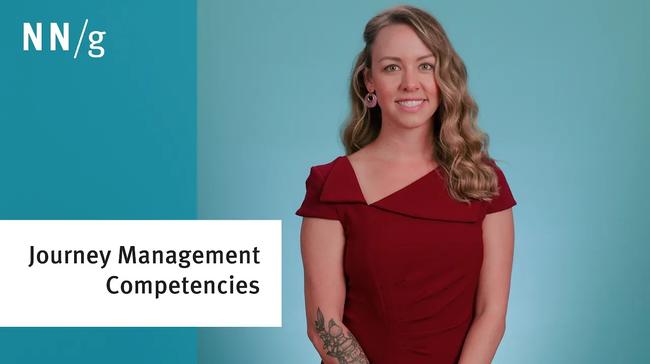
The 3 Competencies of Journey Management
Kim Salazar · 5 min

Journey Management vs. Service Design
Kim Salazar · 4 min

Types of User Pain Points
Sarah Gibbons · 4 min
Related Articles:
7 Ways to Analyze a Customer-Journey Map
Kim Salazar · 7 min
Tools for Remote UX Workshops
Therese Fessenden · 6 min
How to Conduct Research for Customer Journey-Mapping
Kate Kaplan · 7 min
Service Blueprinting: Fails and Fixes
Alita Joyce and Sarah Gibbons · 8 min
Foundational UX Workshop Activities
Sarah Gibbons · 10 min
Journey Mapping 101
Sarah Gibbons · 7 min

IMAGES
VIDEO
COMMENTS
This personal mapping exercise gives you a chance to reflect on the events, experiences, and other influences that have shaped you in your leadership journey. Such awareness sheds light on your responses to different situations, and provides grounding for your continued leadership. You will be sharing your journey map with your peers today.
As part of leadership development programs, you have probably been called on to develop traits such as self-awareness, self-regulation, and empathy, all of which require deep self-reflection and introspection to assimilate into your character or behavior (or leadership style). Of course, having the right values, qualities, and behavior traits ...
The Climbers & Crews leadership journey addresses the skills needed for middle management and the leader moving into lower executive ranks. This leader has demonstrated team leadership and develop ...
The 5-step Sanger Leadership Journey framework helps you design intentional opportunities for your leadership development. The framework will help you create a plan for where, when, and how you will test new leadership skills. Steps 1 and 2 are the "pre-work.". Do them once at the beginning of this process to set yourself up for success ...
Navigating Your Leadership Journey. Leadership development is a journey that requires self-awareness, continuous learning, and growth. The five steps of leadership development provide a roadmap to guide you on this journey. Here's how you can apply these steps to your own leadership development: Step 1: Establishing Authority
Investing time to map your leadership journey and reflecting on your achievements unlock a powerful tool for personal and professional development. This intentional practice not only enhances your ...
Some pathways are easy, some are hard, and some are blocked. This metaphor of forest pathways represents one of the most fundamental insights about leadership: Leadership is a journey, not a destination. We never actually arrive at the destination of being the very best leader that we can be. We should aspire to this, but this vision is ahead ...
The production of the route map is the single most important piece of work carried out by leaders on the journey. 3. Engagement. The 'engagement' stage focuses on obtaining the buy-in and commitment from others to the route map. The role of the leader is to not to generate more followers, but to create more leaders throughout the organisation.
Centered Leadership prac-tices build on and reinforce one another, bringing you the inspiration, motivation, and energy to continue. It is, like life itself, a gestalt. Here is the unifying map, refi ned since How Remarkable Women Lead. Since 2008, we have honed the dimensions of Centered Leader-Centered Leadership map of capabilities FRAMING
A Role Map can serve as your anchor for making impactful progress and enjoying the journey. When everyone is clear about his or her responsibilities and objectives, the team moves forward with ...
From The Best Way to Master a New Skill? Try This Creative Approach. , Nov 03, 2021. Find new ideas and classic advice on strategy, innovation and leadership, for global leaders from the world's ...
In turn, you can build and leverage a keener sense of emotional intelligence throughout your leadership development journey. Related: 4 Tips for Developing Your Personal Leadership Style. 2. Set an Attainable Goal. Goal setting is an essential component of any leadership development plan.
How you tell the story of your own path towards becoming a leader frames your leadership style, as well as the ways in which you cultivate and support other leaders within your organization. Based ...
The Leadership Journey. by. Leonard D. Schaeffer. From the Magazine (October 2002) Monday, February 10, 1986 was my first day as chief executive of Blue Cross of California. At a welcoming ...
Taking the lead in providing direction to others in your team when they need support. Finding that your peers naturally follow your lead. Understanding the needs of both individuals and the group ...
To enhance your leadership skills, you need to embark on an intentional leadership journey, where practicing evidence-based skills becomes part of your daily life. We believe that each social interaction you have—be it a dinner with friends, a project team meeting at work, a volunteering event, or a class lecture—offers you the chance to ...
1. Travel light: According to Matt Fitzgerald, author of Racing Weight, endurance athletes avoid carrying extra weight—extra pounds waste energy and impacts peak performance. Similarly, great ...
The road map to strategic leadership is a journey that involves unlocking emotional intelligence, enhancing decision-making skills and building future leaders. It requires continuous learning ...
Dave A. Cornelius, DM. KnolShare. Creating a visioning journey map (VJM) is an essential activity for leaders and teams to thrive. getty. Leaders without a clear vision and journey map are likely ...
Accountability was built through peer feedback and manager involvement. Feedback loop. Strategic leadership development journeys like the one described here impact the leader and the organization. At the health care system, the impact of the leadership development journey was assessed using multiple methods.
When journey maps are used in the right way — as a means to address a specific, known business goal — the benefits are vast. Our earlier research on practitioners' journey-mapping activities identified several advantages, including aligning stakeholders around common goals and vision, enabling focus on customer needs, and helping team members establish a personal connection with the end ...
The leadership map provides a way for organizations to make experience a pillar in an organization's talent-management process that is as important as competency models. Building an organizational leadership map includes four steps: (i) interviewing senior executives—to identify the key experiences, lessons learned, personal strategies, and ...
The inclusion of a student-selected mentor is a key distinction between the Journey Line Narrative detailed in this article and other reflective exercises. ... A. T. Gianciolo, & R. J. Sternberg (Eds.), The nature of leadership (pp.331-342). Thousand Oaks, CA: Sage. Bierema, L. L., & Merriam, S. B. (2002). E-mentoring: Using computer-mediated ...